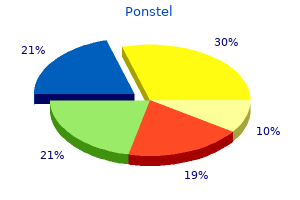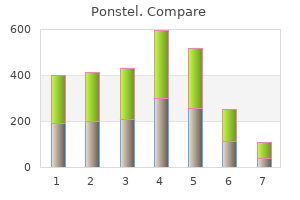Ralph Tufano, M.B.A., M.D.
- Professor of Otolaryngology - Head and Neck Surgery

https://www.hopkinsmedicine.org/profiles/results/directory/profile/0015647/ralph-tufano
The reason is that there is additional distortion resulting from positive growth rate spasms when i pee purchase ponstel 250mg on line, and hence the larger the public health subsidy spasms near elbow generic ponstel 250mg without a prescription. This has mostly been attributed to the foreign aid spasms hands purchase ponstel overnight delivery, direct investment and the spillover e ects from the technological progress and medical improvement in the developed world back spasms 20 weeks pregnant generic ponstel 250 mg without a prescription, all of which can be taken as exogenous from the perspective of the poor countries. Note that the analysis here focuses on the evolution of the growth paths before and after the change, and the transitional dynamics 25 29 are ignored due to the complicated dynamical system. So di erent sets of model parameters can be calibrated by targeting countries in di erent stages of growth paths. The following parameters are chosen in line with the literature: discount rate = 0. Gollin(2002)) show that the share is generally the same with the developed countries, taking into account of self-employing sectors where income, accruing whether to labor or to capital, is in practice treated as capital income in previous inquiries. Compared with the developed countries, both fertility rate and death rate are much higher in the Sub-Saharan Africa. Nevertheless, in the developed countries, the e ectiveness of human capital accumulation is calibrated to be 0. Increased spending on education from both the national budgets and foreign aid has led to educational progress, which has allowed them to narrow the gap with the rest of the world, particularly in the primary education. However, they are still far behind in terms of the quality of the education and schooling. Nevertheless, we take a macro approach by targeting the key macroeconomic variables, as we do not think it is convincing to argue that any single infectious disease can be accountable for the underdevelopment in the Sub-Saharan Africa. As far as we know, there are no papers on estimating what this function is likely to be. It assumes contact rate is decreasing in e ective health capital, and marginal 29The dynamical system is of eight dimensional system, which is too complicated to study the transitional dynamics. Goenka and Liu (2012) are able to characterize the full global dynamics as there is only a one-way interaction which simpli es the dynamics. Goenka, Liu and Nguyen (2014) have a full analytic characterization of local dynamics in the neo-classical version of the model, and show that the disease endemic steady state is saddle-point stable under reasonable assumptions. This leaves us with two disease-related model parameters: the e ectiveness of controlling disease, a and the recovery rate, . Note that this number represents the loss from both mortality and morbidity from infectious diseases. There is an extensive literature on health expenditure in the developed countries. This consists of government health expenditure, private out-of-pocket health expenditure and external aids. It is estimated that external aids is around 10 20% of total health expenditure, and government funding takes up the half of the rest of health expenditure (See Gottret and Schieber (2006), Xu, et al. So we target the health expenditure ratio in a decentralized economy to be around 1. In addi tion to the low level of physical capital, indicating high marginal return to production, the prevalence of infectious diseases signi cantly reduces the marginal return to human capital accumulation. This implies all the time is allocated to production, instead of human capital accumulation. The large portion of saving is used for investment of physical capital, rather than health capital. Thus, with lower e ectiveness of controlling diseases, countries are in a poverty trap. The marginal bene t of human capital accumulation is still not large enough for justifying its time allocation, and hence there remains no eco nomic growth. Nevertheless, all these start changing when a increases further above the critical value 2. Countries start investing in human capital accumulation and transit from a poverty trap to an equilibrium with positive economic growth. When we compare the centralized economy with the decentralized ones, the interesting 27 observations are the following. The rst is that the centralized economy or the introduction of public health policy does not necessarily guarantee economic growth. It can be seen that the centralized economy is also in a poverty trap when a is below 1. Secondly, when e ectiveness of controlling diseases increases, the centralized economy starts taking o way before the decentralized economy does. Thirdly, for the resource allocation, when both economies are in the poverty trap, the saving rates are in fact the same, though more is spent for health expenditure in the centralized economy. This is because of the fact that social planner takes into account the positive externality of controlling disease. The reason is that the positive externality from controlling diseases becomes increasingly larger as a increases, due to the additional distortion from the growth. The Evolution of Growth Paths Due to Increasing E ectiveness of Controlling Diseases Fraction of Time Allocated for Labor Supply (L) Human Capital Accumulation (1-u) Growth Rate (g%) 1 0. The examination of e ect of increase in life expectancy gives us a glimpse of how the demographic transition a ects the disease control, and hence human capital investment and economic growth. Figure 5 depicts the evolution of economic variables when mortality rate drops from 1. However, only a small portion of the increased saving is spent on health expenditure. As a result, the e ective labor supply remains relatively the same with an indiscernible increase. The marginal bene t of human capital accumulation is still not large enough for justifying its time allocation, and hence there remains no economic growth. Nevertheless, all these start changing when mortality rate drops further below the critical value 1. Moreover, the increment in saving rate as a result of rising life expectancy increases, which is shown by the increase of slope for the saving curve. Similarly, health expenditure ratio increases as well, which leads the e ective labor supply to rise. There is also the relative change of the slope above and below the critical mortality rate, for both the health expenditure ratio and the e ective labor supply in Figure 5. Similar to the previous sub-section, when we compare the centralized economy with the decentralized ones, we nd that the centralized economy does not necessarily guarantee economic growth; when mortality rate declines, the centralized economy starts taking o way before the decentralized economy does; when both economies are in the poverty trap, the saving rates are in fact the same, though more is spent for health expenditure in the centralized economy; and the optimal health subsidy is convex in shape. The reason is that the positive externality from controlling diseases becomes increasingly larger as life expectancy increases, due to the additional distortion from the growth. Thus, the fact that poor countries in a poverty trap are short of public health expenditure is not only because they have tighter budget constraints, but more importantly they lack incentives for investing in health capital. As life expectancy increases, more health expenditure is allocated for controlling infec tious diseases and labor force participation rate rises, which increase output and consumption level. However, on the other hand, as the result of direct e ect of declining death rate, the 30See Chakraborty, et al. These papers examine the e ect of infectious diseases on the economy by taking mortality as endogenous, but with simpli ed disease dynamics. Soares (2005) also looks at e ect of exogenous change of longevity on human capital but the mechanism is via endogenous fertility rather than through health expenditures and control of diseases. The Evolution of Growth Paths Due to Rising Life Expectancy Fraction of Time Allocated for Labor Supply (L) Human Capital Accumulation (1-u) Growth Rate (g%) 0. The reason is that more people alive di use the resource allo cation and lower consumption level for each individual. One thing to note is that the Malthusian e ect can take place only when a country is in a poverty trap. For the other situations, a decrease in the death rate or increase in life expectancy unambiguously increases growth through the mechanism of increased incentives for saving due to the decrease in the e ec tive discount rate. Figure 6 depicts the change of output, consumption and welfare when mortality rate drops from the initial level of 1. The solid line presents the change for the decentralized economy, while the dashed line shows the change for the centralized economy.

The burden of proving the existence of one or more of the circumstances identified in (a) through (e) of this subsection shall be on the person asserting such existence muscle relaxant in pregnancy buy ponstel 500 mg. A copy of this publication is available for review at the department and at each local health department spasms near temple best order for ponstel. This requirement can be satisfied by: (a) Arranging for the referral laboratory to notify either the local health department spasms heart order ponstel 250 mg without prescription, the department muscle relaxant benzodiazepine discount ponstel online american express, or both; or (b) Forwarding the notification of the test result from the referral laboratory to the local health department, the department, or both. Reports during normal public health business hours may be sent by secure electronic transmission, telephone, or secure facsimile copy of a case report. Notification may be sent by written case report, secure electronic transmission, telephone, or secure facsimile copy of a case report. Such procedures will also prescribe the steps that will be taken to remove the danger to others. The board authorizes the school principal to exclude a student who has been diagnosed by a physician or is suspected of having an infectious disease in accordance with the regulations within the most current Infectious Disease Control Guide, provided by the State Department of Health and the Office of the Superintendent of Public Instruction. The principal and/or school nurse will report the presence of suspected case or cases of reportable communicable disease to the appropriate local health authority as required by the State Board of Health. If the district has a release, the information may be disclosed pursuant to the restrictions in the release. A school principal or designee has the authority to send an ill child home without the concurrence of the local health officer, but if the disease is reportable, the local health officer must be notified. Diseases in a contagious state may be controlled by excluding the student from the classroom or by referring the student for medical attention. Staff members of a school must advise the school nurse and principal or designee when a student exhibits symptoms of an infectious disease based on the criteria outlined in this procedure. The school nurse and principal or designee must be provided with as much health information as is known about the case in a timely manner so that appropriate action can be initiated. The length of absence from school for a student ill from a contagious disease is determined by the directions given in the Infectious Disease Control Guide or instructions provided by the health care provider, or instructions from the local health officer. When symptoms of communicable disease are detected in a student who is at school, the regular procedure for the disposition of ill or injured students will be followed unless the student is fourteen years or older and the symptoms are of a sexually transmitted disease. Notify the teacher of the arrangements that have been made prior to removing the student from school; 5. Notify the school nurse to ensure appropriate health-related interventions are in place. Students should be asked to wash their own minor wound areas with soap and water under staff guidance when practicable. If performed by staff, wound cleansing should be conducted in the following manner: 1. Gloves must be worn when cleansing wounds which may put the staff member in contact with wound secretions or when contact with any bodily fluids is possible; 3. Hands must be washed before and after treating the student and after removing the gloves; and 5. Body fluids include blood, semen, vaginal secretions, drainage from scrapes and cuts, feces, urine, vomitus, saliva, and respiratory secretions; B. The student will be accommodated in a least restrictive manner, free of discrimination, without endangering the other students or staff. State law prohibits you from making any further disclosure of it without the specific written consent of the person to whom it pertains, or as otherwise permitted by state law. New employee training will be provided within six months from the first day of employment in the district. No projections from the finished ceiling shall be less than 7 feet vertical distance from the finished floor. No student shall occupy an instructional area without windows more than 50 percent of the school day. Sun control is not required for sun angles less than 42 degrees up from the horizontal. Toilet paper shall be available, conveniently located adjacent to each toilet fixture. If hand operated self-closing faucets are used, they must be of a metering type capable of providing at least ten seconds of running water. An automatically controlled hot water supply of 100 to 120 degrees Fahrenheit shall be provided. Standard Precautions (includes universal precautions) Standard precautions are a newer approach to infection control. Broader than universal precautions (many state laws refer to this term), standard precautions are recommended practice for protection against transmission of bloodborne pathogens and other infectious diseases in the workplace. They combine the major features of universal precautions, and body substance isolation, and are based on the principle that all blood, body fluids, secretions (including respiratory secretions), excretions (except sweat), non-intact skin, and mucous membranes may contain transmissible infectious agents. Remember, alcohol hand sanitizers have not been shown to be effective against norovirus or Clostridium difficile spores or for soiled hands. In these instances, hands and other affected skin areas of all exposed persons should be thoroughly washed with soap and water as soon as possible. Broken glass should be disposed of in a container which keeps others from being cut. Check with the environmental health office of your local health jurisdiction for any additional local infectious waste disposal requirements and for information in the absence of a local infectious waste management program. Cleaning with soap and water with wiping, particularly with microfiber cloths, will remove dirt and organic matter and the majority of microorganisms. In cases of contamination with body fluids, bathrooms, and high-touch surfaces, registered disinfectants or appropriate bleach solutions will kill most of the organisms which are left. Sterilizers destroy or eliminate all forms of microbial life including fungi, viruses, and all forms of bacteria and their spores. The area to be disinfected must stay wet for the length of time indicated on the label to kill the microorganisms. For general disinfection, choose a product that is effective against most bacteria and viruses and lists schools as a recommended site. Nonenveloped viruses such as noroviruses are more difficult to kill than vegetative (growing) bacteria and enveloped viruses such as influenzas. A 1:10 bleach solution of household (5-6%) bleach with a minimum five-minute wet contact time is necessary to kill C. Never mix cleaners and disinfectants, or any other chemicals, unless the labels indicate it is safe to do so. For example, chlorine bleach must never be mixed with ammonia or acids such as vinegar. Make sure the wipe is suitable for the surface and the surface will stay wet the required contact time. When products contain both detergents and disinfectants, you can clean first with the product; then use a fresh wipe or cloth to disinfect the surface. If a surface is visibly dirty, a cleaner or detergent must be used first, then the surface disinfected. After cleaning a spill, apply an appropriate disinfectant to the area and allow to remain wet for at least the minimum time specified by the manufacturer. When mats are rolled up, all sides of mats should be cleaned before they are rolled up. Microfiber clothes and mops have been shown to be more effective, easier to clean, and use, than the old cloth ones. It is not considered hazardous material, so it can be thrown away in the school dumpster.
Buy ponstel paypal. Yahoo Answers - Funny & STUPID Rhetorical Questions!.

Syndromes
- 11 to 20 mg per kg of body mass per day for women
- Nausea and vomiting
- Symptoms of Lyme disease, especially if you may have been exposed to ticks
- Difficulty breathing or a chronic cough (if the cancer spreads to the chest)
- Hold back too much inintimate relationships
- Repeated pneumonias
- A floor or unit that does only the type of surgery you are having (For example, for hip replacement surgery, do they have a floor or unit that is used only for joint-replacement surgeries?)

